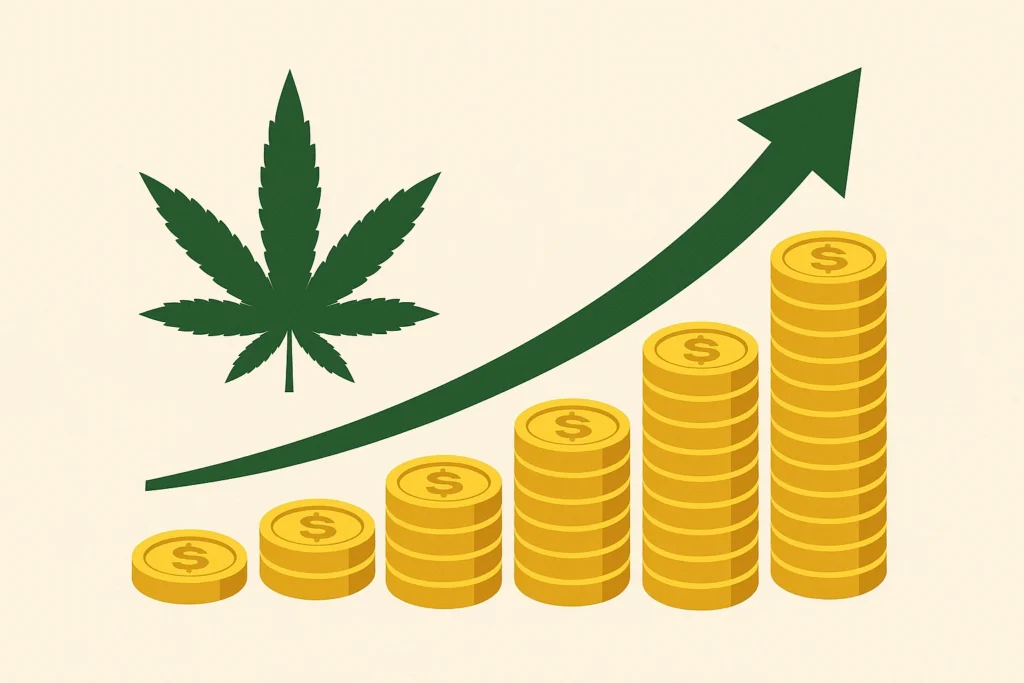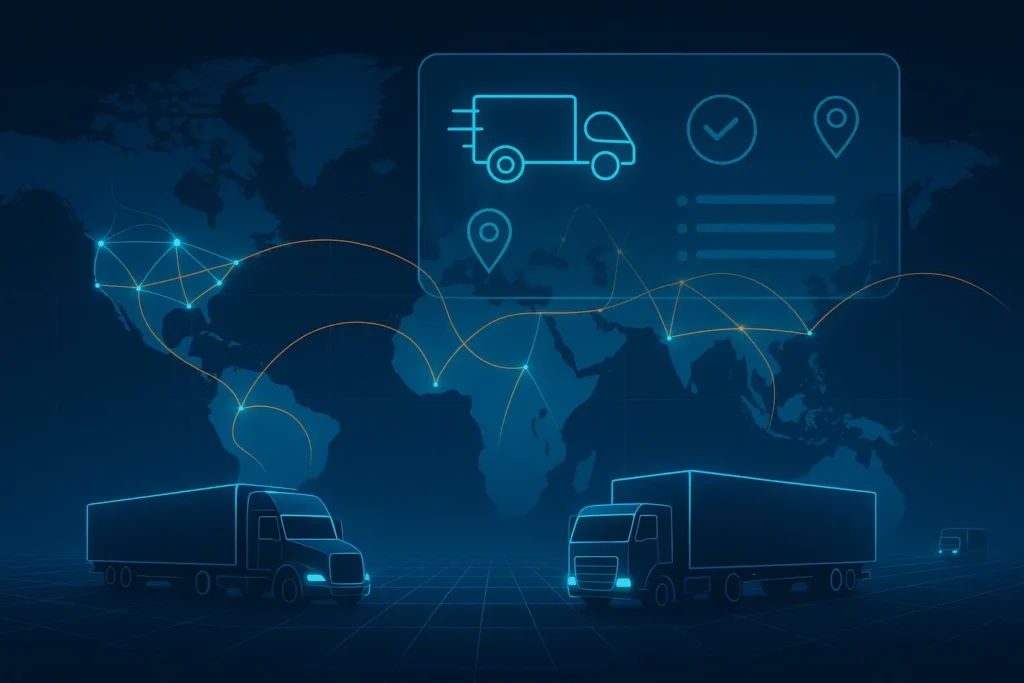You’ve heard the horror stories about delivery apps leaking user data, exposing addresses, mishandling payments, or being hijacked through weak APIs. And when it comes to white-label Postmates apps, the fear is even stronger: is it really safe to trust a ready-made platform with customer data, delivery tracking, and payment processing?
In 2025, safety is no longer optional. On-demand delivery apps handle sensitive user profiles, real-time locations, financial transactions, partner data, and operational logistics. A single vulnerability doesn’t just affect your users — it disrupts your entire business and invites legal, financial, and reputational damage.
This guide gives you a clear, honest assessment of how safe a white-label Postmates app can be, what risks you should look out for, and what security practices actually matter. No exaggeration, no sugarcoating — just practical, research-backed security guidance tailored to the on-demand delivery ecosystem.
By the end, you’ll know exactly what makes a white-label Postmates app secure, how to evaluate providers, and why choosing a security-first development partner can make all the difference.
Understanding white-label Postmates app security landscape
A white-label Postmates app isn’t “just a template.” It’s a full on-demand delivery ecosystem that handles user onboarding, courier operations, merchant interactions, real-time GPS tracking, and payment processing. That means its security foundation must be as strong as any enterprise-grade delivery platform.
Here’s what the security landscape really looks like in 2025:
What white-label security actually means
A white-label delivery app is built once and customized for multiple businesses. This creates two important realities:
- The core codebase must be secure enough to serve many clients without exposing cross-app vulnerabilities.
- Providers must follow strict update, patching, and compliance processes because one weak implementation can affect every deployment.
Done right, white-label security is extremely strong. Done wrong, it becomes a high-risk liability.

Why people worry about white-label apps
- Fear of reused or outdated code
- Concern that providers may not offer compliance documentation
- Anxiety about payment data exposure
- Doubt about server-level protections and infrastructure quality
- Unclear maintenance and update policies
The worry isn’t baseless — many cheap providers cut corners and ignore security standards.
Current threat landscape for Postmates-type platforms
On-demand delivery apps are major cyberattack targets due to:
- High-volume personal data (names, addresses, contact info)
- Real-time GPS trails
- Connected merchant accounts
- Courier identity and verification details
- Payment credentials and transaction logs
- Partner APIs and logistics integrations
Attackers typically target:
- Weak authentication
- Exposed APIs
- Insecure delivery-tracking endpoints
- Payment gateways
- Fraud attempts around promo codes, fake orders, or courier identity theft
Security standards in 2025
Delivery apps must align with:
- ISO 27001
- SOC 2 Type II
- GDPR, CCPA, PDPA depending on region
- PCI DSS for all in-app transactions
- OWASP Mobile and API Security Top 10

These numbers show why delivery apps demand exceptional security — especially when white-label solutions are involved.
Key security risks and how to identify them
A white-label Postmates app operates across four high-risk environments at the same time: users, merchants, couriers, and administrators. Each environment introduces its own security risks — and ignoring even one can compromise the entire delivery ecosystem.
Below is a clear, structured breakdown of the major risks and how to detect them before they become problems.
Data protection and privacy risks
User personal information
Delivery apps store names, emails, phone numbers, saved addresses, delivery notes, and device identifiers. If encryption or access control is weak, this information becomes an easy attack target.
Payment data exposure
If the app doesn’t meet PCI DSS requirements, card information can be intercepted through insecure APIs or compromised third-party payment modules.
Location tracking concerns
Real-time GPS and address history are extremely sensitive. Weak tokenization or API endpoints can expose user movement patterns — a major privacy threat.
GDPR/CCPA compliance gaps
Failure to manage consent logs, data retention, user deletion requests, and data-minimization policies leads to legal risk and heavy fines.
Technical vulnerabilities
Code quality issues
Cheap or outdated white-label solutions often reuse unmaintained code. This results in predictable vulnerabilities and easy exploitation.
Server security gaps
Shared hosting, weak firewalls, outdated OS patches, and misconfigured cloud services are common causes of breaches.
API vulnerabilities
Delivery apps rely heavily on APIs (for orders, courier tracking, merchant operations). Insecure API tokens, missing rate limits, or exposed endpoints allow attackers to manipulate orders, pricing, or courier data.
Third-party integrations
Payment gateways, map services, SMS providers, and analytics SDKs can introduce vulnerabilities if outdated or poorly configured.
Business risks
Legal liability
If the provider offers no compliance documentation or logs, you become liable for data leaks, payment misuse, and privacy violations.
Reputation damage
Delivery apps depend heavily on user trust. A single breach can permanently destroy brand credibility and partner confidence.
Financial losses
Security failures lead to:
- refunds
- fraud claims
- regulatory fines
- downtime
- loss of merchants or couriers
Regulatory penalties
Data protection authorities impose strict penalties for non-compliant apps handling personal and financial information.
Risk assessment checklist
Use this checklist to evaluate any white-label Postmates app provider:
- Is all user, merchant, courier, and admin data encrypted end-to-end?
- Are payment flows compliant with PCI DSS?
- Are APIs protected with authentication, rate limiting, and token rotation?
- Does the provider perform regular penetration testing and code audits?
- Are GDPR/CCPA compliance documents available?
- What is the update and patching policy?
- Is infrastructure hosted on secure, enterprise-grade cloud platforms?
- Are incident response and backup systems clearly defined?
- Does the provider maintain logs for compliance and forensics?
- Is there a verifiable history of security issues or data incidents?
If the provider cannot answer even one of these clearly, the risk level is already high.
Security standards your white-label Postmates app must meet
A delivery platform operating at the scale of a Postmates-style app handles sensitive user data, real-time courier tracking, financial transactions, and merchant operations. That means it must meet the same security standards as any enterprise on-demand logistics platform. If a white-label provider cannot prove compliance with these standards, the app is not secure enough for 2025.
Below is a complete breakdown of the mandatory certifications and technical safeguards your white-label Postmates app must meet.
Essential certifications
ISO 27001 compliance
This defines the global benchmark for information security management systems. It ensures your provider follows strict rules for data handling, access control, risk assessment, and incident management.
SOC 2 Type II
Validates that security controls are not only implemented but also monitored consistently. It is essential for delivery apps that store user and courier data on cloud servers.
GDPR compliance
Mandatory if you operate or target users in the EU. It covers consent management, data retention, deletion rights, and privacy transparency.
HIPAA (if applicable)
Required only if the app is used for sensitive health-related deliveries (example: pharmacy deliveries). It ensures encrypted medical data handling.
PCI DSS for payments
Non-negotiable for apps processing debit/credit card information. Ensures secure payment storage, transmission, and processing.
Technical requirements
End-to-end encryption
All user, courier, merchant, and admin data — including GPS routes and payment tokens — must be encrypted during transmission and storage.
Secure authentication (2FA/OAuth)
Delivery apps should enforce secure login methods to prevent account takeover, including optional 2FA for admin and merchant dashboards.
Regular security audits
Third-party audits validate that no hidden vulnerabilities exist in the codebase or server configuration.
Penetration testing
Simulated attacks expose weak areas before real attackers do — especially important for API-driven delivery apps.
SSL certificates
All data must travel over secure, encrypted HTTPS connections to avoid interception.
Secure API design
Your APIs should use token rotation, rate limiting, IP restrictions, and role-based access control to protect order management and tracking endpoints.
Security standards comparison table
| Security Requirement | Mandatory | Why It Matters for a Postmates-Style App |
|---|---|---|
| ISO 27001 | Yes | Ensures structured, audited security processes |
| SOC 2 Type II | Yes | Confirms long-term operational security controls |
| GDPR | Yes (region-based) | Required for user privacy and data rights |
| PCI DSS | Yes | Protects payment data and prevents financial fraud |
| HIPAA | Conditional | Needed for medical or pharmacy deliveries |
| Encryption (E2E) | Yes | Protects sensitive user and courier information |
| 2FA/OAuth | Yes | Prevents account takeover and unauthorized access |
| Penetration testing | Yes | Identifies real-world attack vulnerabilities |
| Secure hosting | Yes | Prevents server-level breaches and downtime |
This table gives you a realistic picture of what “secure” should mean in 2025 — not marketing language, but verifiable standards.
Red flags: how to spot unsafe white-label providers
Most security failures in white-label Postmates apps don’t happen because the model is unsafe — they happen because the provider is. A secure app depends entirely on the development practices, infrastructure quality, and compliance standards of the company building it.
Below are the most critical warning signs that indicate a provider is not safe enough for an on-demand delivery platform
No security documentation
If the provider cannot show proof of encryption, API security, data flow architecture, or compliance reports, that is a major red flag.
Cheap pricing without explanation
Extremely low pricing almost always means compromised code quality, outdated libraries, or zero investment in security audits.
No compliance certifications
When a provider has no ISO, SOC, PCI, or GDPR compliance documentation, your business will carry all legal risk.
Outdated technology stack
Use of old frameworks, unsupported SDKs, or insecure versions of libraries dramatically increases vulnerability.
Poor code quality
Copy-paste codebases, unstructured architecture, or lack of code reviews lead to predictable exploitation.
No security updates policy
If the provider doesn’t offer regular patches, the app becomes vulnerable within weeks of launch.
Lack of data backup systems
Without automated backups, you are exposed to data loss, ransomware attacks, or accidental deletion.
No insurance coverage
A reputable provider maintains cyber liability and professional indemnity insurance. If they don’t, the risk shifts entirely to you.
Evaluation checklist
Use this checklist during vendor selection to determine whether a provider is actually secure:
Questions to ask providers
- How often do you perform security audits?
- Do you follow ISO 27001 or SOC 2 Type II guidelines?
- Do you provide PCI DSS-compliant payment modules?
- What encryption protocols do you use for data transmission and storage?
- Can you share API security documentation?
Documents to request
- Penetration testing reports
- Data flow diagrams
- Server architecture documentation
- Compliance certificates
- Code review policies
- Incident response framework
- Backup and disaster recovery plan
Testing procedures
- Run third-party vulnerability scans
- Test API endpoints for exposure
- Validate authentication and session management
- Check encryption on stored data
- Inspect network traffic for insecure transmission
Due diligence steps
- Review provider history and previous clients
- Verify update frequency and patch logs
- Check for any past security incidents
- Evaluate the quality of technical support
- Ensure the provider uses enterprise-grade cloud hosting
If a provider fails more than two items on this checklist, they are not safe for a Postmates-style delivery application.
Best practices for secure white-label Postmates app implementation
A white-label Postmates app becomes truly safe only when security is built into both the development process and the day-to-day operations after launch. Most breaches happen because businesses treat security as a “set it once” task, instead of an ongoing discipline.
Below are the essential best practices you must follow before launch and after launch.
Pre-launch security
Security audit process
Before going live, the entire platform — user app, courier app, merchant dashboard, admin panel, APIs, and server infrastructure — must undergo a complete security audit. This includes penetration testing, API testing, and network vulnerability scanning.
Code review requirements
Every component should pass:
- static code analysis
- manual code review
- dependency vulnerability checks
- third-party module verification
This ensures no reused or outdated code sneaks into production.
Infrastructure hardening
Your server environment must be configured with:
- firewalls
- restricted SSH access
- strict IAM permissions
- secure database configurations
- protection against DDoS
- automated monitoring tools
Without this, even a secure app can be compromised through the server layer.
Compliance verification
Before deployment, the provider should confirm alignment with:
- GDPR
- CCPA
- PCI DSS
- ISO 27001 structure
- SOC 2 Type II guidelines
Compliance must not be assumed — it must be proven with documentation.
Staff training programs
Admin and support staff must be trained on:
- safe data access practices
- fraud prevention
- handling suspicious requests
- privacy policies
- incident escalation
Human error is still one of the biggest causes of breaches.
Post-launch monitoring
Continuous security monitoring
Use automated tools to monitor traffic anomalies, suspicious login attempts, and potential API misuse. Attackers often test vulnerabilities silently for weeks.
Regular updates and patches
Your provider must release routine updates for:
- security patches
- library upgrades
- OS and server updates
- bug fixes
- payment gateway updates
A delivery app without updates becomes unsafe very quickly.
Incident response planning
Define a clear, documented process for:
- detecting incidents
- isolating affected systems
- notifying stakeholders
- preserving logs and evidence
- restoring services
A slow reaction increases both damage and liability.
User data management
Implement strict policies for data retention, deletion requests, and data minimization. Do not store data longer than required by law or business need.
Backup and recovery systems
Automated backups must be taken daily — or hourly for high-volume platforms. Backups should be tested frequently to ensure they actually restore without corruption.
Security implementation timeline
| Phase | Timeline | Key Security Activities |
|---|---|---|
| Initial security design | Week 1–2 | – Architecture documentation – Encryption standards setup – API security layout planning – Compliance planning (GDPR, PCI DSS, SOC, ISO) |
| Development + code reviews | Week 3–4 | – Developer code checks – Dependency/library vulnerability reviews – Early penetration tests – API security validation |
| Infrastructure setup | Week 5 | – Secure servers configuration – Firewalls & network protection – SSL certificates setup – IAM roles & permission structuring |
| Full audit + compliance review | Week 6 | – Penetration testing – GDPR/CCPA verification – PCI DSS validation – Risk assessment & mitigation |
| Final hardening + training | Week 7 | – Infrastructure hardening – Incident response setup – Backup strategy implementation – Team/staff security training |
| Launch with monitoring | Week 8 | – Real-time monitoring tools – Log tracking & alerts – Post-launch patching workflow |
Legal and compliance considerations
A white-label Postmates app doesn’t just need technical security. It must also meet the legal, regional, and industry-specific compliance requirements governing data protection, financial transactions, courier identity verification, and consumer rights. If your app fails even one required compliance rule, your business—not the provider—faces penalties, lawsuits, and operational bans.
Below is a structured breakdown of all legal and compliance areas that matter for on-demand delivery platforms in 2025.
Regulatory requirements
Data protection laws by region
Your white-label Postmates app must comply with different regulations depending on where users, couriers, or merchants access the platform:
- GDPR (Europe)
- CCPA/CPRA (California)
- UK Data Protection Act
- PDPA (Singapore, Malaysia)
- PIPEDA (Canada)
- India DPDP Act 2023
- Brazil LGPD
Each law requires specific transparency, consent, and data management processes.
Industry-specific regulations
If your delivery app handles sensitive items—such as pharmaceuticals, alcohol, or compliance-restricted goods—you must follow additional regulations for:
- age verification
- identity proof
- prescription validation
- restricted item handling logs
User consent management
You must clearly document:
- what data is collected
- why it is collected
- how long it is stored
- who can access it
Consent logs and audit trails must be maintained to avoid compliance violations.
Privacy policy requirements
Your privacy policy must include:
- data usage explanation
- third-party services disclosure
- user rights and deletion request process
- retention timelines
- data transfer mechanisms
A weak privacy policy increases legal risk immediately.
Terms of service essentials
Well-structured terms protect your business from misuse, fraud, and operational disputes. They must cover:
- user responsibilities
- courier responsibilities
- merchant obligations
- refund processes
- prohibited activities
Liability protection
Insurance requirements
For a delivery business, recommended coverage includes:
- cyber liability insurance
- technology errors & omissions insurance
- data breach insurance
- business interruption coverage
These protect you from financial loss if a breach occurs.
Legal disclaimers
Clear disclaimers limit liability in cases of:
- courier misconduct
- merchant-side errors
- misuse of the platform
- fraudulent activity
User agreements
These agreements clarify acceptable use, payment terms, disputes, and platform limitations. They must be legally reviewed to avoid loopholes that attackers can exploit.
Incident reporting protocols
Delivery apps must have a documented process for notifying:
- users
- authorities
- partners
within the legally required timeframe if a breach occurs.
Regulatory compliance monitoring
Compliance is not a one-time job. It requires:
- quarterly audits
- annual legal reviews
- data processing logs
- documented proof of compliance
Businesses that skip continuous monitoring are at the highest risk of penalties.
Compliance checklist by region
| Region | Mandatory Regulations | Key Requirements |
|---|---|---|
| EU | GDPR | Consent logs, user deletion rights, data minimization |
| USA (California) | CCPA/CPRA | Data transparency, opt-out rights, breach notifications |
| UK | UK DPA 2018 | Lawful data processing, security controls |
| Canada | PIPEDA | Consent, safeguarding, accountability |
| India | DPDP Act | Purpose limitation, data fiduciary duties, breach reporting |
| Brazil | LGPD | User rights, legal basis for processing |
| Singapore/Malaysia | PDPA | Notification, retention limits, protection obligations |
Read more : – Clone App Development Company
Why Miracuves white-label Postmates app is your safest choice
When it comes to white-label Postmates-style delivery apps, the biggest security factor isn’t the features you see on the surface — it’s the invisible security architecture behind the scenes. This is where Miracuves stands apart. Every solution is built with a security-first mindset, enterprise-grade practices, and long-term protection rather than short-term shortcuts.
Below is a breakdown of the core security advantages Miracuves provides.
Miracuves security advantages
Enterprise-grade security architecture
Miracuves uses isolated, hardened environments, secure development pipelines, code audits, and encrypted communication channels to ensure every component of the delivery ecosystem is protected.
Regular security audits and certifications
Miracuves follows ISO 27001-aligned processes, conducts routine SOC 2–style operational reviews, and ensures every release undergoes testing and compliance checks.
GDPR/CCPA compliant by default
All systems follow strict data minimization, consent logging, and user rights management aligned with global privacy laws.
24/7 security monitoring
Miracuves actively monitors unusual activity, suspicious API calls, traffic anomalies, and unauthorized login attempts across all layers.
Encrypted data transmission
All user, courier, and merchant data — from GPS routes to payment tokens — is encrypted with industry-standard protocols.
Secure payment processing
PCI DSS–compliant payment modules ensure safe card transactions, tokenized payment flows, and secure checkout experiences.
Regular security updates
Security patches, dependency upgrades, API improvements, and infrastructure optimizations are rolled out continuously.
Insurance coverage included
Miracuves maintains cyber protection and professional liability coverage, giving clients additional assurance and reducing risk.
conclusion
Don’t compromise on security. Miracuves white-label Postmates app solutions come with enterprise-grade protection built-in from day one. With more than 600 successful digital products delivered and zero major security breaches, Miracuves remains a trusted partner for businesses worldwide.
Get a free security assessment and see why businesses choose Miracuves for safe, compliant, and scalable delivery platforms.
The safest path is choosing a partner who treats security as a core requirement, not a marketing claim. With the right standards, ongoing monitoring, and a security-first development approach, a white-label Postmates app can be just as secure — or even more secure — than a custom-built platform.
If you follow the frameworks, checklists, and best practices outlined in this guide, you’ll be able to evaluate providers clearly, avoid unsafe solutions, and launch a delivery platform that is protected, compliant, and ready for long-term growth.
FAQs
1. How secure is a white-label app compared to custom development?
A well-built white-label app is equally secure — sometimes more secure — because it uses a matured, tested codebase that has already undergone audits and fixes over many deployments.
2. What happens if there’s a security breach?
The impact depends on your provider’s incident response system. A secure provider isolates the issue, notifies stakeholders, patches vulnerabilities, and restores systems using clean backups.
3. Who is responsible for security updates?
Your provider should manage all core updates, while your team handles operational and policy-level security. With Miracuves, updates and patches are included by default.
4. How is user data protected?
Through encryption, secure authentication, strict access controls, and compliance-driven data handling policies aligned with GDPR, CCPA, and PCI DSS.
5. What compliance certifications should I look for?
ISO 27001, SOC 2 Type II, GDPR/CCPA alignment, and PCI DSS for payment processing are essential for delivery apps.
6. Can white-label apps meet enterprise security standards?
Yes. With the right architecture, auditing, and encryption protocols, white-label apps can match enterprise-grade requirements.
7. How often should security audits be conducted?
At minimum, quarterly audits plus full penetration tests twice a year.
8. What does Miracuves include in its security package?
Encryption, secure APIs, PCI-compliant payments, GDPR-ready data flows, continuous monitoring, and regular updates.
9. How is security handled for operations in different countries?
Compliance is adjusted region-wise (GDPR, CCPA, PDPA, DPDP Act). The core system remains secure globally.
10. What insurance is needed for app security?
Cyber liability insurance and tech E&O coverage protect against data breaches, downtime, and legal claims.








